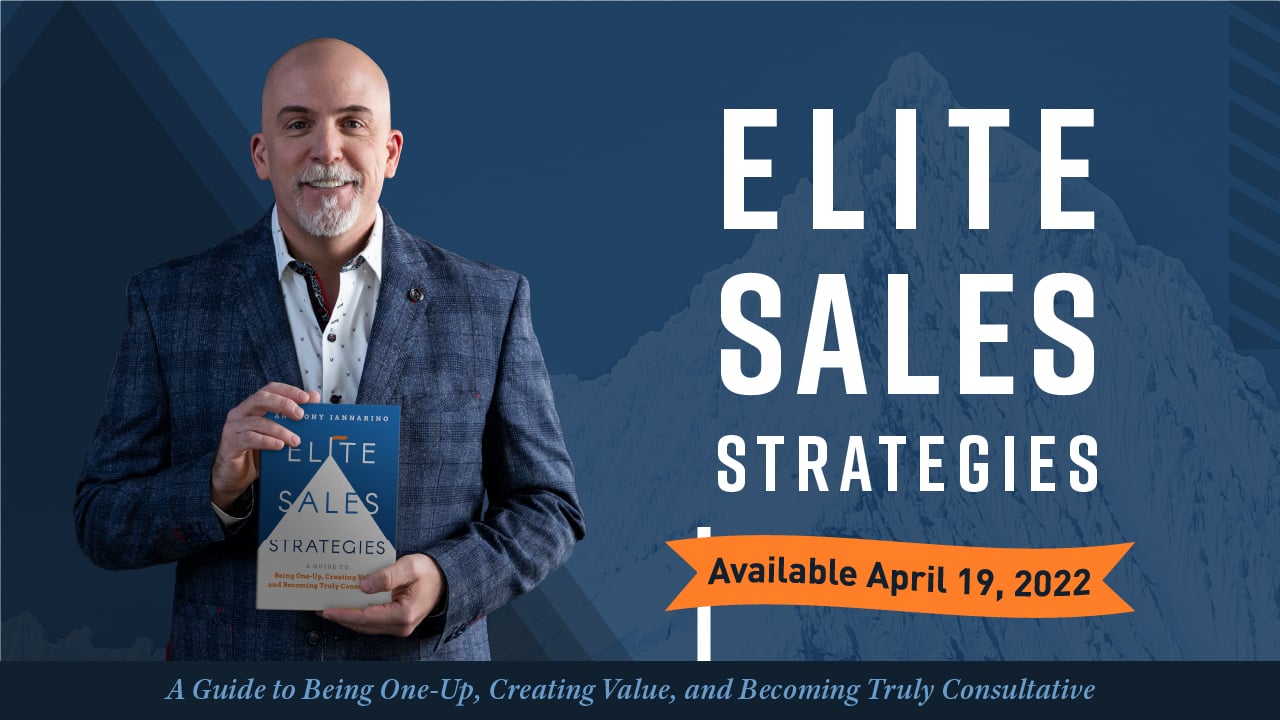The idea that salespeople solve problems is true. But this is mostly only true when solving the problem means selling their prospective client their "solution." Every product or service is designed to solve a problem, and because your client isn't going to buy what you sell if they don't recognize a need, you search for a problem.
But the search for a problem is only concerned with a specific problem, one they can solve with their solution. This makes the idea that salespeople are problems solvers laughable. They are problem solvers but in the narrowest way possible. However, there is a certain class of salespeople who are One-Up who solve problems outside of the kind that leads directly to their solution, even though they may sell their prospect their product or service as part of the advice and recommendations as a way to improve their business results.
The best way to understand how to create greater value for your clients and be truly consultative is to recognize that a number of your client's problems are not something you can solve with your solution. Instead, they are often made up of changes the client would have to make to improve their business results.
The Real Salesperson Problem Solver
Imagine a salesperson sells a platform that allows their clients to acquire the employees they need to run their business. The prospect has a problem, as they need to hire truck drivers. They are going to advertise on some platform, and some salespeople would grab the contract and collect their commission for making the sale.
I would argue that a better salesperson might sit down with the client and show the aggregated data that would cause them to recognize their pay rates are just over twenty-five percent of the average, as well as what is working for the companies that are succeeding to acquire the truck drivers they need. This salesperson's advice and recommendations create greater value for the client, the kind that is all but certain to create a preference to buy from them.
The first salesperson is a problem solver, but only if the advertisements result in their prospective client acquiring the truck drivers. The second salesperson is a business improvement specialist who actually solves the client's problem—with the largest part of the results coming from the salesperson's advice and recommendations.

The Outer Limits of the Problem You Solve
If the outer reach of the problem you sell is selling your client your "solution," then you are not going to create the kind of value and experience your prospects and your clients need. You might make sales and a good income, but it will come without the impact you might have made had you solved problems beyond the value of your "solution."
It can be difficult to understand this idea. In Eat Their Lunch: Winning Customers Away from Your Competition you will find a concept called Level 4 Value Creation,™ that explains the limits of the value you create. But the two most important levels of value are Level 3, the tangible result, like running ads on a platform, and Level 4, the strategic outcome.
Level 3 treats the client's problem as needing to advertise for the employees they need. Level 4 treats the problem as actually acquiring the employees, even if the requires the prospective client has to make additional changes—including on that some One-Down salespeople who believe they have no right to tell the client what they need to do when that is the exact definition of consultative.

Your Obligation as a Problem Solver
There is an argument to be made about the obligations of a professional salesperson. The salesperson that sold the ads to the company without telling them what they would need to do to succeed did not solve the problem, yet they took the client's money. This is a transactional approach to sales, even though there was every opportunity to make it consultative.
The second salesperson provided the advice and recommendations that would improve the company's ability to hire the people they need. Their obligation was to produce the result the client needed, even if it meant solving a different problem, and one for which the salesperson is missing a "solution," unless you believe the solution was the salesperson's counsel (and to be sure, it was!)
It might be easier to sell your solution and call yourself a problem-solver than to do the work of ensuring the client achieves the better result they need. Some of us walk away from deals where the client refuses to make the change necessary. By refusing to take the client's business, they avoid having a client that doesn't get the outcome they needed.

What Are You Enabling?
Most of what salespeople are taught and trained to do is identify a problem. They are also trained to solve the problem by selling their solution. This is when we could be developing salespeople to be truly consultative, solving the problems that would prevent them from improving their results.
Most of the time, what some accept as a consultative approach is nothing more than asking questions and not pressuring their prospective clients. But many of your clients need to be professionally pressured, not to buy your solution, but to make the changes necessary for your recommendations to solve some part of the problem.
It's more important than ever that salespeople think of themselves as business improvement specialists or business advisors than to think of themselves as problem-solvers. If identifying a problem is a way to sell their ''solution,'' then that is where their problem-solving ends. Modern enablement needs to catch up when it comes to providing counsel, advice, and recommendations.












